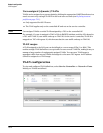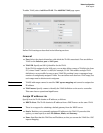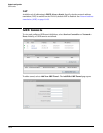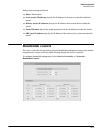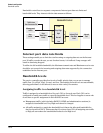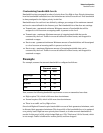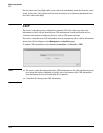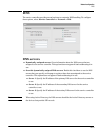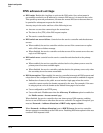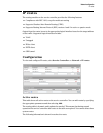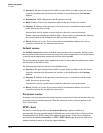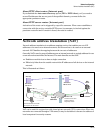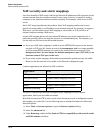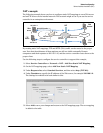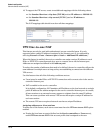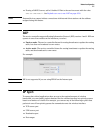
Network configuration
DNS
DNS advanced settings
DNS cache: Enable this checkbox to activate the DNS cache. Once a host name is
successfully resolved to an IP address by a remote DNS server, it is stored in the cache.
This speeds up network performance, because the remote DNS server does not have to
be queried for subsequent requests for this host.
An entry stays in the cache until one of the following is true:
An error occurs when connecting to the remote host.
The time to live (TTL) of the DNS request expires.
The service controller restarts.
DNS switch on server failure: Controls how the service controller switches between
servers:
When enabled, the service controller switches servers if the current server replies
with a DNS server failure message.
When disabled, the service controller switches servers if the current server does not
reply to a DNS request.
DNS switch over: controls how the service controller switches back to the primary
server.
When enabled, the service controller switches back to the primary server once the
primary server becomes available again.
When disabled, the service controller switches back to the primary server only when
the secondary server becomes unavailable.
DNS interception: When enabled, the service controller intercepts all DNS requests and
relays them to the configured DNS servers. DNS interception must be enabled to support:
Redirection of users to the public access interface login page when the service
controller cannot resolve the domain requested by the user. For example, if the user
is using a private or local domain as the default home page in its browser.
Users configured to use HTTP proxy.
Users with static IP addresses when the Allow any IP address option is enabled on
the Public access > Access control page.
When disabled, the service controller does not intercept any DNS requests, enabling
devices to use a DNS server other than the service controller. To support this option, you
must set Network > Address allocation to DHCP relay agent or Static.
Note When Network > Address allocation is set to DHCP Server the service controller
always returns its own address as the DNS server. Disabling DNS interception in this case
causes all DNS requests to fail.
10-20



